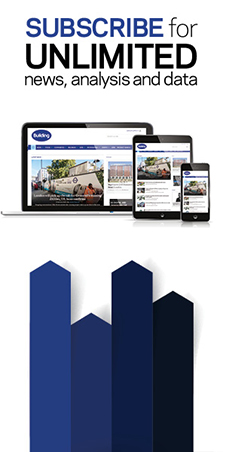- News

All the latest updates on building safety reformRegulations latest
- Focus
- Home
- News
- Focus
- Comment
- Events
- CPD
- Building the Future
- Jobs
- Data
- Subscribe
- Building Boardroom
What will the infrastructure strategy say about private finance?
By Joey Gardiner2025-06-02T06:00:00

Source: Treasury Flickr
As well as setting departmental capital budgets for rest of the parliament, this month’s spending review will also be followed by a long-awaited infrastructure strategy that will determine the future of private finance on public projects. Joey Gardiner reads the tea leaves
This month, on 11 June, the chancellor Rachel Reeves will set out the spending plans for all government departments for the years ahead. The much-anticipated spending review will confirm departmental budgets – including capital budgets – for the current financial year and, critically, detail spending limits for the rest of this parliament.
The announcement will be a particularly significant moment for construction, revealing which departments are going to have resources to spend on new buildings and infrastructure in the years ahead.
However, just as important as the basic numbers on capital spend will be the 10-year infrastructure strategy that the government had promised to release “alongside” the review. The strategy is being drawn up by the Treasury to lay out a long-term plan for the country’s social, economic and housing infrastructure.
And, vitally, the government has said the strategy will set out its approach to the role of private finance in public build projects – across economic, social and housing infrastructure. It has also committed to publishing a pipeline of government projects so that investors and builders can skill-up and prepare for what is coming.
The Treasury has been reviewing the use of private finance in public projects since last autumn, when it set up an infrastructure taskforce comprised of private investors with a brief to boost private investment and report into the strategy. This is critical for construction, because since the cancellation of the private finance initiative (PFI) in England in 2018, there have been few routes for private money to finance the provision of social infrastructure such as schools, hospital and prisons.
As Building has reported, the Treasury’s investigation into expanding private investment has gone beyond existing popular models for economic assets such as utilities, to considering how private money might once again be brought to bear on provision of this kind of social infrastructure.
The big unknown for the sector is what exactly the strategy is going to say on private finance, particularly around social infrastructure. Here Building sets out what is expected – and whether a full-scale return of PFI could really be on the cards…
Already registered? Login here
To continue enjoying Building.co.uk, sign up for free guest access
Existing subscriber? LOGIN
Stay at the forefront of thought leadership with news and analysis from award-winning journalists. Enjoy company features, CEO interviews, architectural reviews, technical project know-how and the latest innovations.
- Limited access to building.co.uk
- Breaking industry news as it happens
- Breaking, daily and weekly e-newsletters
Get your free guest access SIGN UP TODAY

Subscribe now for unlimited access
Subscribe to Building today and you will benefit from:
- Unlimited access to all stories including expert analysis and comment from industry leaders
- Our league tables, cost models and economics data
- Our online archive of over 10,000 articles
- Building magazine digital editions
- Building magazine print editions
- Printed/digital supplements
Subscribe now for unlimited access.
View our subscription options and join our community


















